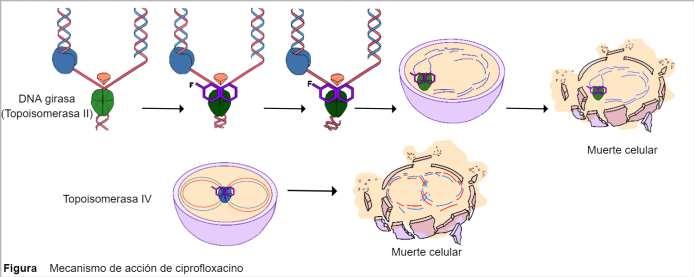
3 minute read
FDAU-33 DIABETES GESTACIONAL CON COMPLICACIÓN A PREECLAMSIA: REPORTE DE UN CASO FDAU-34 ANÁLISIS DE CASO CLÍNICO. TRATAMIENTO FARMACOLÓGICO POST-QUIRÚRGICO DE HERNIA INGUINAL
22 al 26 de noviembre
FDAU-33 DIABETES GESTACIONAL CON COMPLICACIÓN A PREECLAMSIA: REPORTE DE UN CASO.
Advertisement
García, EA1; Montoya2, PM; Sifuentes3, DE; Urrutia, SI4; Verástegui, J5 Facultad de Medicina de la Universidad Autónoma de Coahuila
RESUMEN
Reporte de caso clínico de paciente femenina diagnosticada con diabetes gestacional (DG), que desarrolla posteriormente preeclamsia. Se busca generar conciencia de la importancia del correcto tratamiento y vigilancia de estos pacientes.
INTRODUCCIÓN
La prevalencia de DG mundialmente se ha estimado en 7% de todos los embarazos, resultando en más de 200 mil casos anuales. Su principal complicación es la preeclampsia, con estimación de riesgo 2-4 veces mayor de presentarse en estos casos, siendo un diagnóstico y tratamiento adecuado una parte vital para su manejo.
PRESENTACIÓN DEL CASO CLÍNICO
Paciente femenino de 27 años de edad, programada desde consulta externa para termino del embarazo por patologías concomitantes a las 38 SDG. Refiere antecedentes de DG diagnosticada a las 32 SDG en tratamiento con Metformina de 500 mg/8 horas, además de preeclampsia de 140/90 mmHg que ha sido tratada con Nifedipino de 30 mg/24 horas, manteniéndose en parámetros meta. A la exploración física no se encuentran alteraciones relevantes.
JUSTIFICACION DEL TRATAMIENTO
La Metformina demuestra funcionar como agente terapéutico para el tratamiento de la DG y ensayos clínicos aleatorizados sugieren que podría tener lugar en el tratamiento o la prevención de la preeclampsia.
CONSIDERACIONES ÉTICAS
La protección de los derechos, seguridad y bienestar de la paciente durante el seguimiento de su caso cumple con los principios de la declaración de Helsinki, y de la Ley General de Salud. La paciente fue debidamente informada, otorgando el consentimiento de difusión y publicación del caso, entendiendo que su información personal se mantendrá en completa confidencialidad.
DISCUSIÓN DEL MECANISMO DE ACCIÓN
Los mecanismos por los cuales la Metformina puede prevenir la preeclampsia incluyen una reducción en la producción de factores antiangiogénicos y la mejora de la disfunción endotelial, probablemente a través de un efecto sobre las mitocondrias.
CONCLUSIÓN
Un tratamiento adecuado con Metformina en los casos donde la paciente desarrolle DG puede mejorar en gran medida el pronóstico y la evolución de dicha patología.
ABSTRACT
22 al 26 de noviembre
Clinical case report of a female patient diagnosed with gestational diabetes (GD), who subsequently develops preeclamsia. The objective is to raise awareness of the importance of correct treatment and surveillance of these patients.
INTRODUCTION
The prevalence of GD worldwide has been estimated at 7% of all pregnancies, resulting in more than 200 thousand cases annually. Its main complication is preeclampsia, with an estimated 2-4 times higher risk of occurrence in these cases, being an adequate diagnosis and treatment a vital part of its management.
PRESENTATION OF THE CLINICAL CASE
27-year-old female patient scheduled from outpatient for termination of pregnancy due to concomitant pathologies at 38 WOG. She has a history of GD diagnosed at 32 WOG and is being treated with Metformin 500 mg/8 hours, in addition to preeclampsia of 140/90 mmHg which has been treated with Nifedipine 30 mg/24 hours, remaining in target parameters. Physical examination showed no relevant alterations.
JUSTIFICATION OF THE TREATMENT
Metformin is shown to work as a therapeutic agent for the treatment of GD and randomized clinical trials suggest that it could have a place in the treatment or prevention of preeclampsia.
ETHICAL CONSIDERATIONS
The protection of the patient's rights, safety, and well-being during the follow-up of her case complies with the principles of the Declaration of Helsinki and the General Health Law. The patient was duly informed, giving her consent for the dissemination and publication of the case, with the understanding that her personal information will be kept completely confidential.
DISCUSSION OF THE MECHANISM OF ACTION
The mechanisms by which Metformin may prevent preeclampsia include a reduction in the production of antiangiogenic factors and amelioration of endothelial dysfunction, probably through an effect on mitochondria.
CONCLUSIONS
Adequate treatment with Metformin in cases where the patient develops GD can greatly improve the prognosis and evolution of this pathology.










